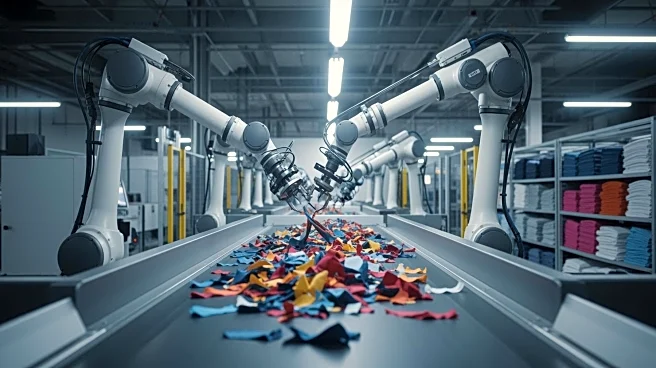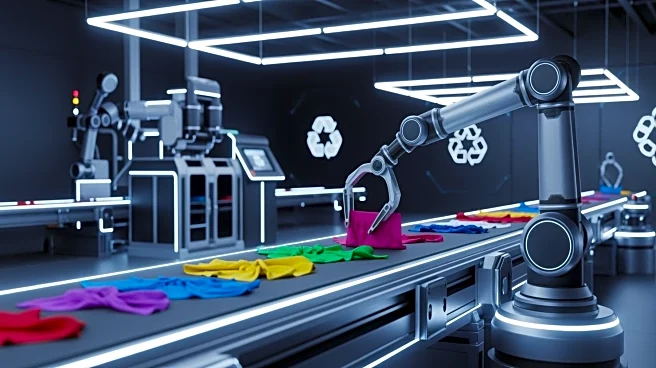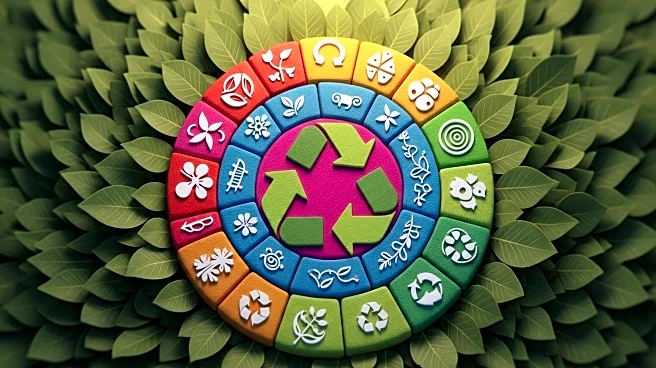What's Happening?
The Taiwan Textile Research Institute (TTRI), supported by the Department of Industrial Technology (DoIT), has unveiled a Multi-Spectral Imaging AI Recognition Technology for Blended Fibers at the Taiwan Innotech
Expo. This technology aims to enhance the efficiency of second-hand clothing recycling by accurately identifying different materials and compositional ratios in garments, such as cotton, polyester, nylon, and elastane. The system achieves a 95% recognition rate and can analyze garments in 0.5 to 1 second, processing 350 to 900 kilograms of waste textiles per hour. This innovation is part of Taiwan's broader efforts to tap into the international yoga apparel market and reduce post-processing costs.
Why It's Important?
The development of this AI technology is significant for the textile industry as it addresses the growing need for sustainable practices and efficient recycling methods. By improving the accuracy and speed of material identification, the technology reduces costs and enhances the recycling process, potentially leading to increased adoption of sustainable practices in the industry. This could benefit manufacturers by providing access to new markets, such as the yoga apparel sector, and contribute to environmental sustainability by reducing waste and carbon emissions.
What's Next?
Collaboration with industry partners like Eclat Textile and Jia Ho Industrial is underway to integrate this technology into the international yoga apparel market. The success of this initiative could encourage further investment in AI-driven recycling technologies and expand Taiwan's influence in sustainable textile manufacturing. Additionally, the technology's ability to process large volumes of waste textiles may lead to broader applications in other sectors, promoting a circular economy.
Beyond the Headlines
The introduction of AI in textile recycling highlights the ethical and environmental dimensions of technology in manufacturing. It raises questions about the balance between technological advancement and job displacement, as manual sorting processes may be replaced by automated systems. Furthermore, the technology's impact on reducing carbon emissions aligns with global efforts to combat climate change, emphasizing the role of innovation in achieving sustainability goals.











